TheRed1
Console Conservationist
I hear they're terrific.does anyone have an idea which amp is in the model 101 gramophones? i might have a line on one...
Sept. 1954
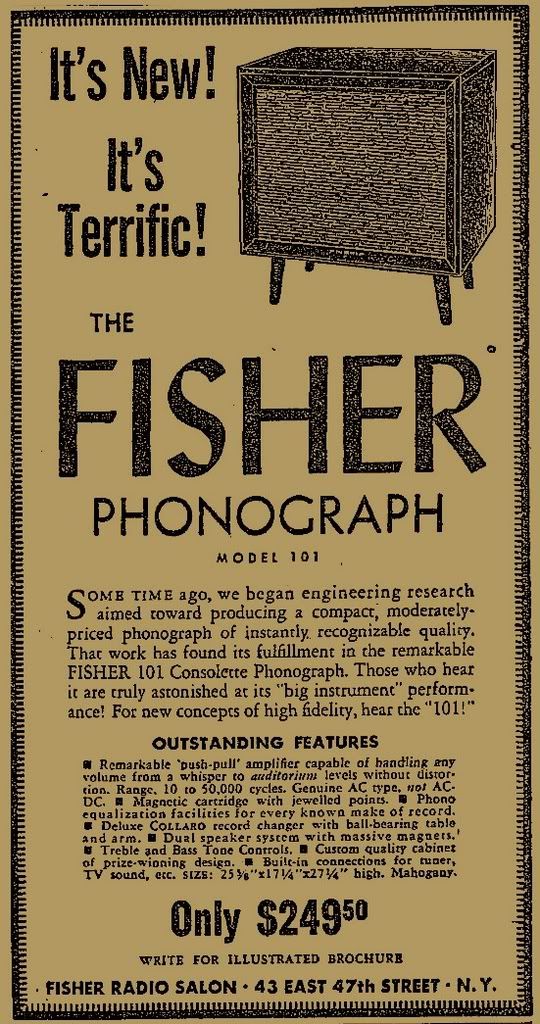
I hear they're terrific.does anyone have an idea which amp is in the model 101 gramophones? i might have a line on one...

This inconsistency might well be more of an illustration of the disconnect between Fisher's sales department and the engineering department. The Sept. '54 ad is most likely referring to the '55 model which would have been out by then. Did you note diamondsouled's thread on the 50-A reissue?....it's actually the model 101-B in limed oak. note the difference between your ad (which seems to be right at the start of this model) and the catalog from duffinator...two speakers at the start, three by the time it's in the catalog. i'll have to see which i have; hoping for the latter.
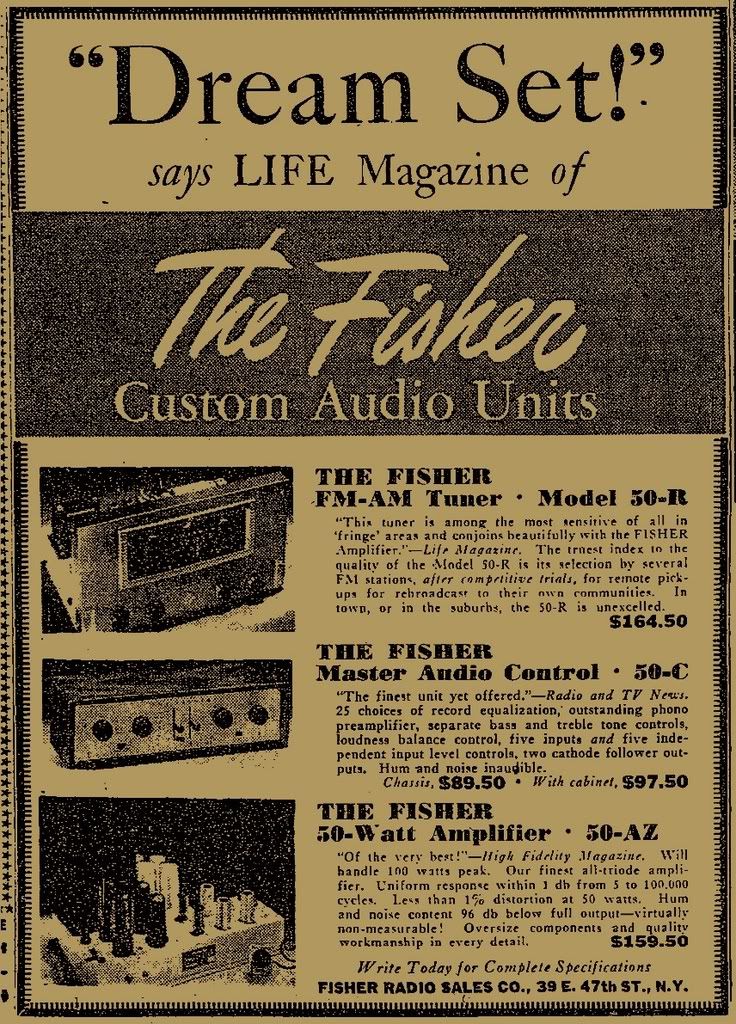

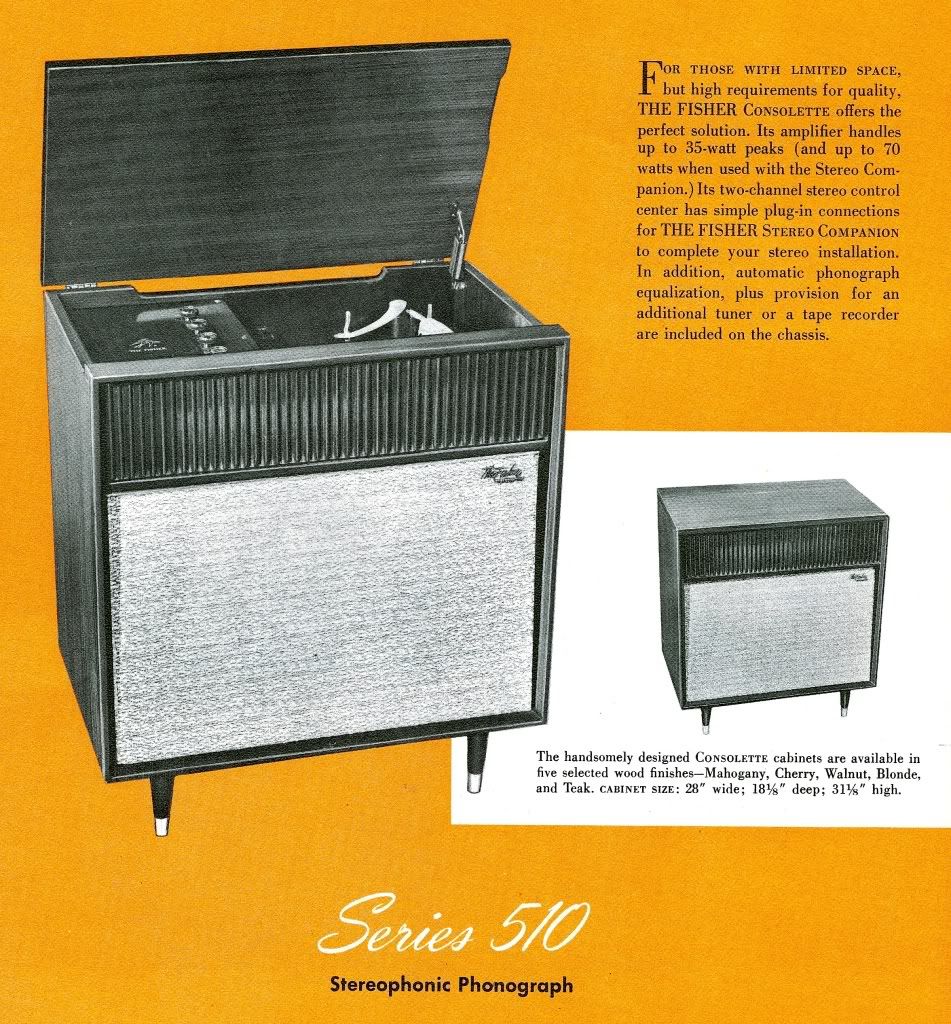

Are you referring the the model line-up or the styling? If it's the model line-up I couldn't agree more. As far as the styling of the cabinets goes it always seemed to me that the console manufacturers followed the furniture industry's lead for good or ill with a few notable exceptions.This together with the lack of a clear plan in the evolution of the lines points to the fact as referenced in statements in some of the ads: the Custom market was a big part of this industry at that time period.
By the way, I'm not Tom,
Carter
I'm not sure if I understand exactly what you're saying here, though:
Are you referring the the model line-up or the styling? If it's the model line-up I couldn't agree more. As far as the styling of the cabinets goes it always seemed to me that the console manufacturers followed the furniture industry's lead for good or ill with a few notable exceptions.
By the way, I'm not Tom,
Carter
My little consolette looks like a cross between the model 101 and the 510.I believe it's from around 1957.
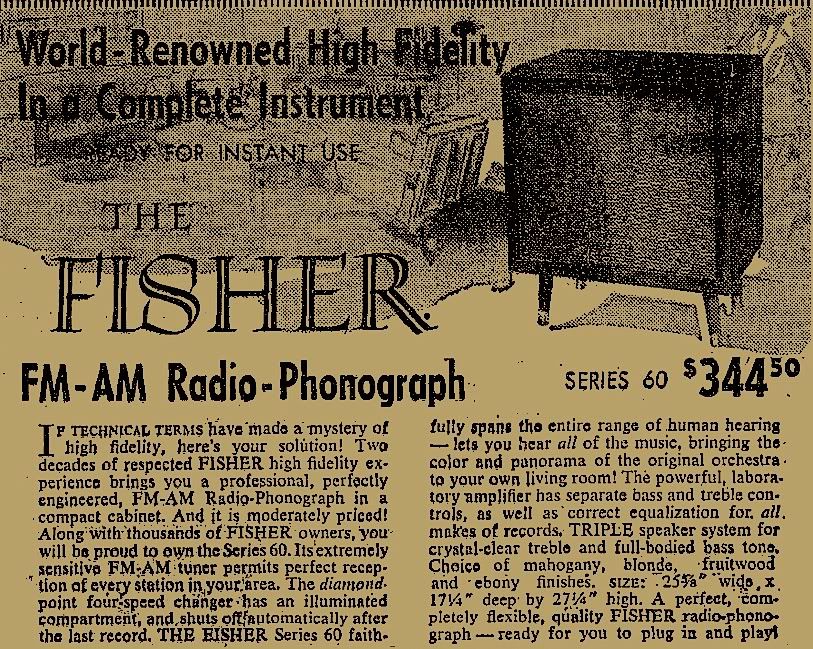
There were subtle marketing differentation in some things too, weren't there? Things like their name, not just "Fisher", but "The Fisher". Always align oneself with the "Hoi Polloi", whenever possible...
That's a new chassis for me. In my Fisher console chassis database I have the Series 60 console listed as a 1952 model with the 3 separate chassis listed above. I have no idea if this earlier Series 60 looked anything like yours. Most of Fisher's consolettes have the same chassis number as model number with no letter suffix (an "all-in-one" chassis).The chassis is a 60.
I sure hope I run across one of these tall and imposing Fishers someday - I will make room!1946 Manhattan Telephone Directory Listings:
Fisher Radio Co.
Sales & Executive Offices...41 E. 47.....PLaza 5-9616
Rapair Svce......................41 E. 47.....PLaza 5-9616
Laboratories.....................117 W. 63...TRaflgr 7-0760
Avery R. Fisher..................145 E. 92...SAcrmnto 2-4144
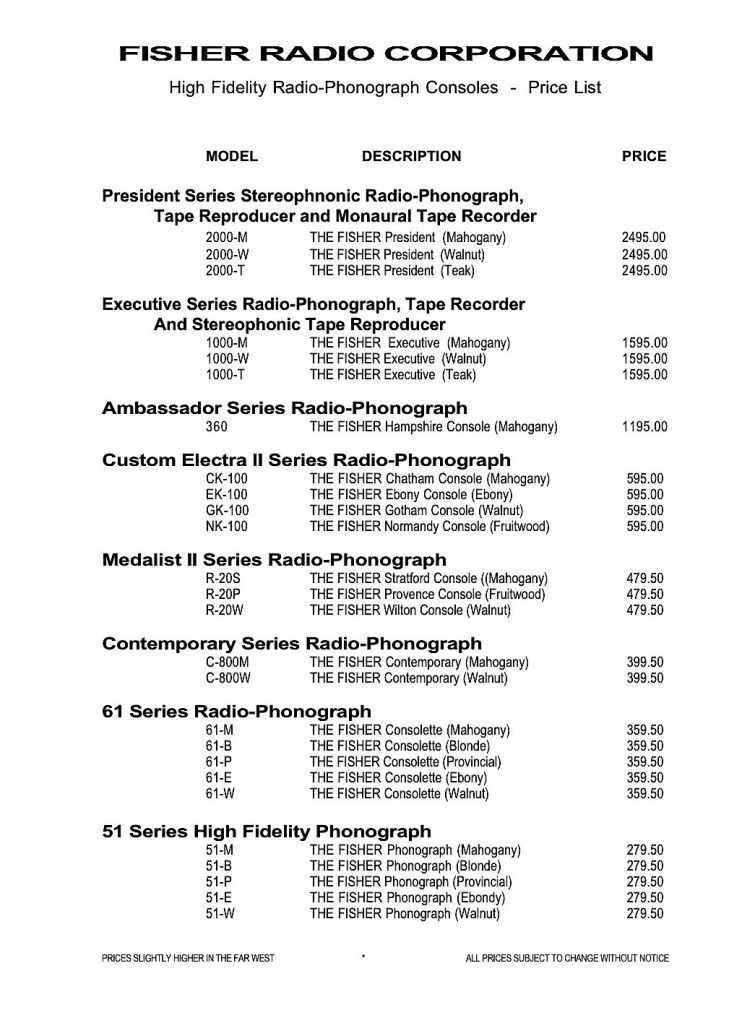

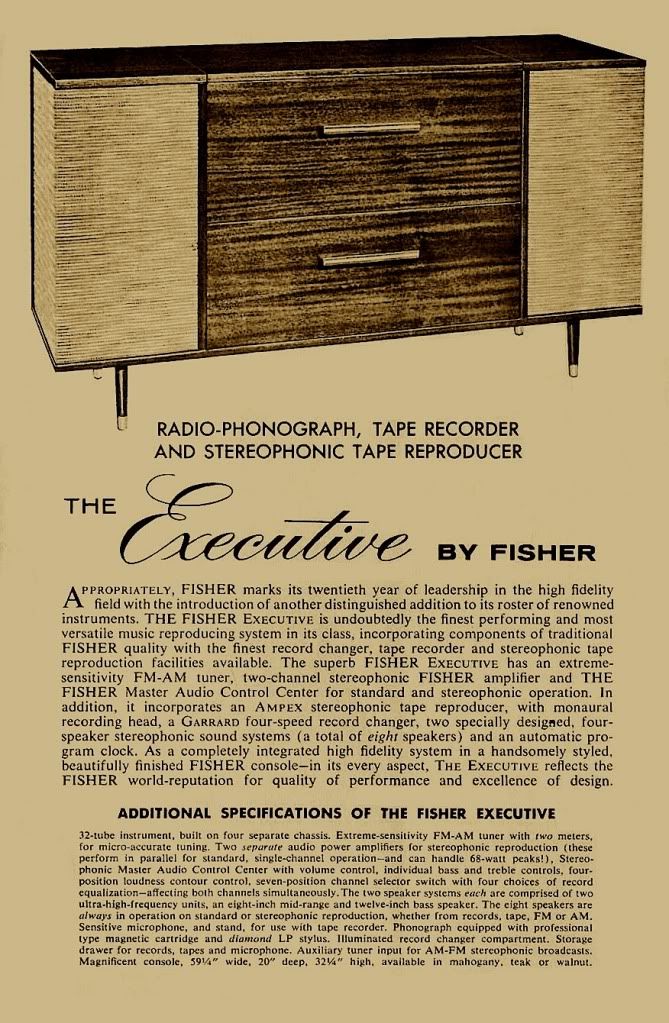
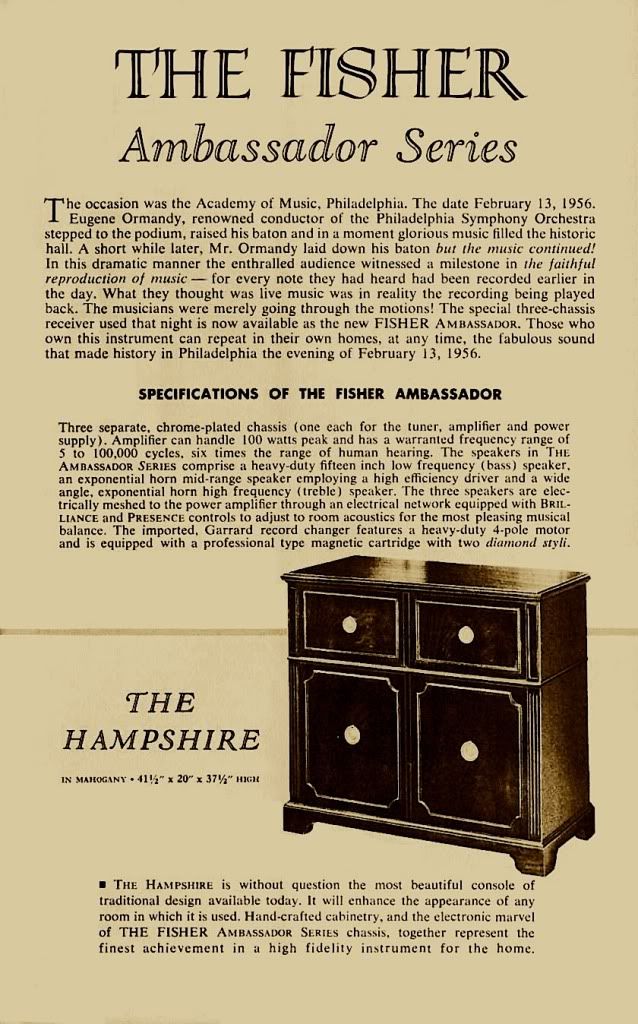
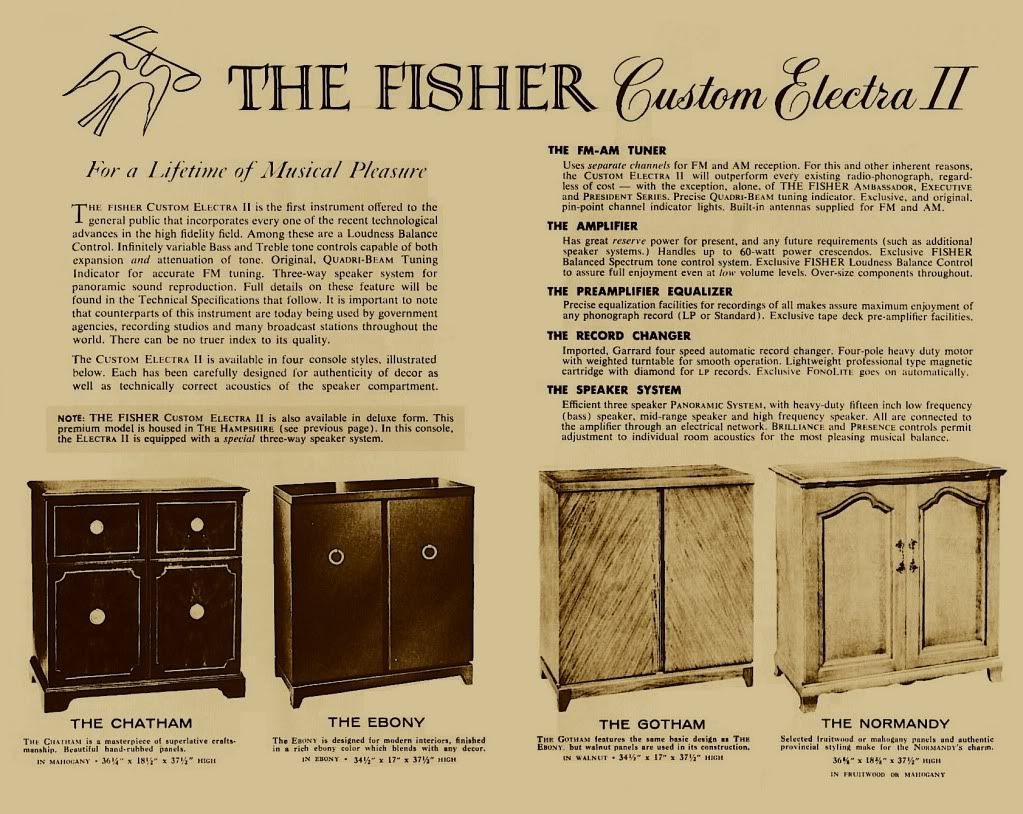
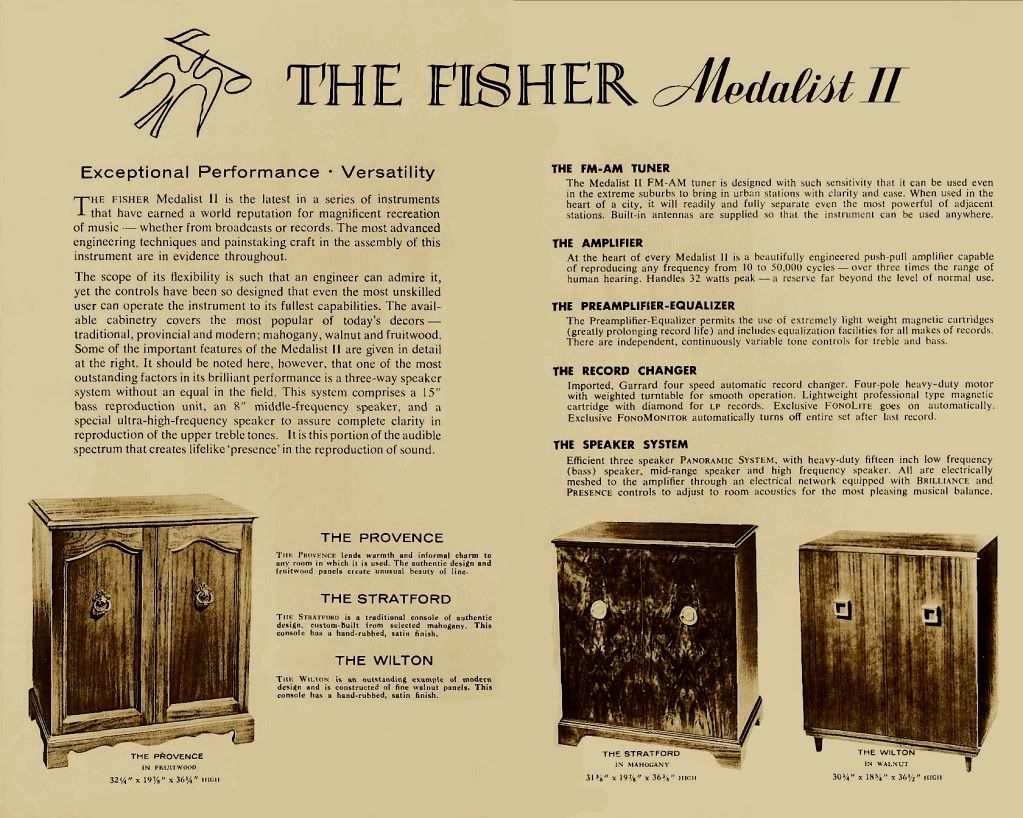
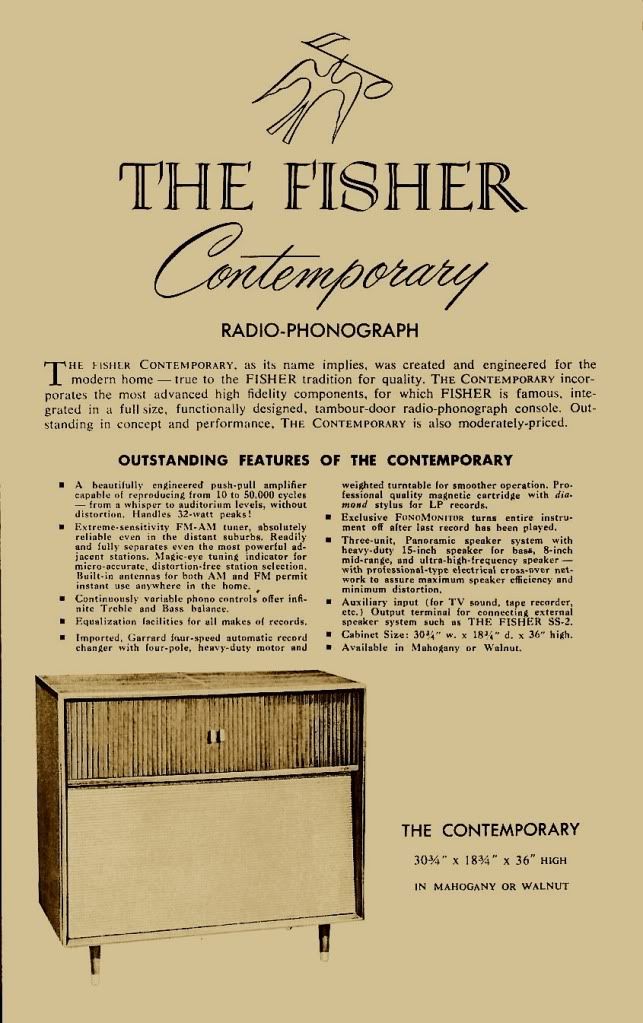

1957 Contemporary, Models: C-800M (Mahogany) and C-800W (Walnut). $399.50. Chassis: R-20. The Contemporary, introduced in early ‘57 (I have an ad from May), evidently sold well enough to justify a significant price increase to $429.50 by the introduction of the ‘58s in September. This doesn’t surprise me since, in my opinion, this is one of Fisher’s best designs. I wonder if this isn’t one of the very first uses of “tambour styling” in a console. Though, come to think of it, RCA had some from about this same time frame.

